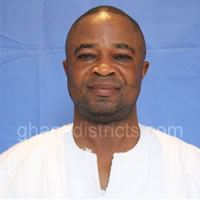Vulnerability
Disability
Introduction
Persons with disabilities (PWDs) have been defined as those who are unable to or are restricted in the performance of specific tasks/activities due to loss of some part of the body as a result of impairment or malformation (Ghana Statistical Service, 2013). As a result, PWDs face a wide range of life challenges which reduce their ability to function to their full potential thereby limiting their participation in a number of activities in life. PWDs therefore have special needs and require special attention and policies to improve their standard of living. As a result data was collected for the first time on PWDs during the 2012 PHC.
Population with Disability
The 2010 PHC shows that 5.9 percent of persons in the Mpohor District have one form of disability or another as shown in Table 6.1. The data shows that the percentage of PWDs in the District is more than twice of that of the Western Region’s average. Indeed Mpohor District is the District with the highest percentage of PWDs in the region. It is not clear what account for the relatively high number of PWDs in the District, and require further research to unearth the underlying causes of this situation.
The distribution of disabilities between the male and the female population is very marginal as the male PWDs is 5.8 percent and that of the female is 5.9 percent.
Type of Disability
Figure 6.1 depicts PWDs in the District by their type of disability. Majority of PWDs in the District (44.2%) have visual or sight impairment followed by those with emotional disability (28.7%). The lowest proportions (5.1%) of PWDs in the District are those with other disabilities. This pattern of PWDs is similar in the male and female populations of the District.
Distribution of PWDs by Type of Locality
Table 6.1 shows that, sight impairment (42.3%) is the most common type of disability in both urban and rural (44.9%) areas followed by those with emotional disability, with urban of 30.9 percent and rural with 28 percent. People with other forms of disabilities recorded the least proportions in both urban and rural areas although it is higher in urban (7.5%) communities than it is in the rural (4.2%) communities. The Table also shows a sharp difference between the proportions of those with intellectual deformities in urban (14.3%) communities and rural (8.7%) communities.
Disability and Activity
Activity status refers to the economic and non-economic activity of persons during the reference period (the seven days preceeding the census night). Economically active persons are those who worked for pay, profit or family gain, those who did not work but had jobs to return to and unemployed persons. The economically not active are persons who did not work and were not seeking for work. These include homemakers, students, retired persons, disabled and are unable to work and those with ill health or too old to work.
Table 6.2 shows that out of the total population of 25,774 aged 15 years and older, about 64.8 percent are employed. Table further indicates that, about two percent of PWDs are unemployed, whilst 33.3 percent of them are economically not active. With emotional disability majority (71.6%) of the PWDs are employed, followed by those with sight disability with 66 percent PWDs employed. Those with intellectual disability are the most who are not economically active (43.9%), followed by those with speech disability (37.7%).
In terms of sex distribution of PWDs, the proportions of female populations with disability (8.2%) slightly outnumber the males (7.8%). However, in terms of activity status by sex of PWDs, the proportion of employed male PWDs (70.0%) is higher than females (59.9%). Out of the males with PWDs, majority are in the emotional disability for both males (75.9%) and females (66.9%).
Date Created : 11/20/2017 7:54:31 AM




